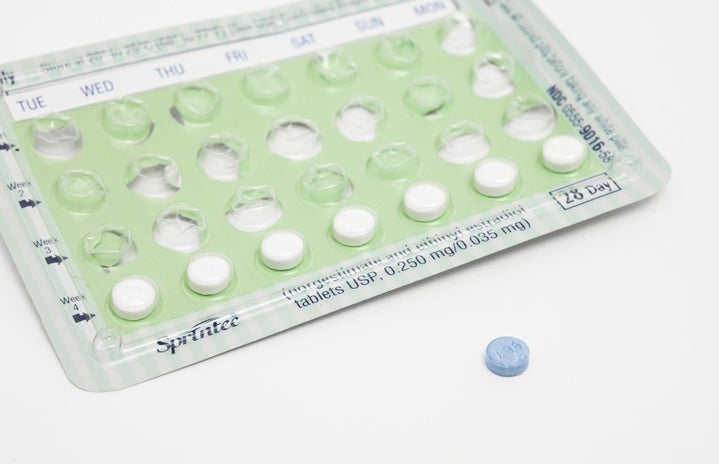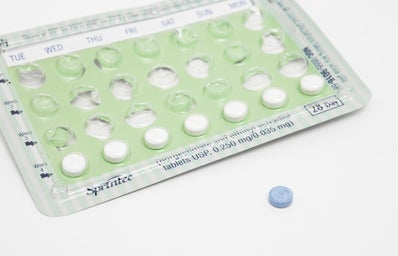You probably know about the pill, but did you know there are options available that last much longer? To fill you in on these options and their effectiveness, side effects, benefits, risks and more, Her Campus brings you the ultimate guide to long-term birth control!
Why use long-term birth control?
Long-term birth control can be preferable for a variety of reasons. Dr. Sara Rizk, an assistant professor of gynecology and obstetrics at Emory University, says, “The reason these methods work better than the pill is because they, in effect, eliminate user error.” However, due to the fact that none of the long-term forms of birth control (or even the pill) prevent STIs, other precautions, like using condoms, must be taken.
IUDs (Intrauterine Devices)
An IUD is small, T-shaped and made out of a flexible plastic. A doctor inserts the IUD into a woman’s uterus, and, depending on the type of IUD, it can stay in from anywhere to three to 10 years at a time. According to Dr. Shieva Ghofrany, a gynecologist at Coastal Obstetrics & Gynecology, there are two varieties of IUDs in the United States:
Copper IUD – ParaGard
- Over 99 percent effective
- Non-hormonal
- Effective for 10 years
While still made of plastic, this IUD is coated with copper, Dr. Ghofrany says. Most often referred to by its brand name, ParaGard, it can stay in the body and remain effective for 10 years. Dr. Ghofrany says that a specific downside of this type is that there is no effect on hormones, which may make your period heavier and give you more cramps. However, since this IUD is the only non-hormonal birth control, you won’t have to experience the side effects that often come with hormones, such as moodiness and changes in sex drive.
Becca*, a sophomore from the University of Missouri-Kansas City, started using ParaGard two years ago. “Before I got my IUD, I was on the pill,” Becca says. “I never remembered to take it, so I was always scared I was going to get pregnant if I had sex. Part of the reason I got ParaGard was to get rid of that fear. I’m free to do what I want now without worrying.”
Hormonal IUD – Mirena/Skyla
- Over 99 percent effective
- Hormonal
- Effective for three to five years depending on brand
These IUDs are made of plastic and are injected with progestin, a hormone that prevents pregnancy. “This is meant to ‘thin out’ the uterine lining to make very little, if no period,” Dr. Ghofrany says.
Mirena can remain in the body and stay effective for five years, while Skyla lasts for three years. According to Dr. Ghofrany, some patients will report systemic side effects like mood changes, headaches, breast tenderness and irregular bleeding.
Both types of IUDs
With both of these types, there are shared advantages and disadvantages. “In general, [IUDs] are harder to put in if you haven’t had children because the cervix is less dilated,” Dr. Ghofrany says. Additionally, she says that IUDs don’t prevent STIs, and sometimes, bacteria can lead to a bad pelvic infection by sticking to the IUD, putting you more at risk for these STIs.
On the other hand, the chances of getting pregnant with an IUD are extremely low, with ParaGard, Mirena and Skyla being over 99 percent effective. Dr. Warren Kennedy, an OB/GYN at Hobart Women’s Specialists, says, “Mirena is almost as effective as getting your ‘tubes tied,’ but completely reversible.”
Birth Control Implant
- Ninety-nine percent effective
- Hormonal
- Effective for three years
A birth control implant is a small, flexible plastic implant that is inserted under the skin of the upper part of the arm by a doctor. The implant continually releases progestin, and Dr. Kennedy says it remains effective for three years. Fewer than one out of 100 women a year will become pregnant while using the implant.
Disadvantages vary among women, but according to Dr. Kennedy, you can feel the implant under your skin, which freaks some women out. However, over time, you won’t even notice it. Additionally, “irregular bleeding is relatively common and is the reason most [implants] are removed,” he says.
Although there are two different brands, Nexplanon and Implanon, there aren’t many differences between the two. Unlike Implanon, Nexplanon is radiopaque, meaning the implant itself can be tracked and show up in an X-ray, an ultrasound, on an MRI and a CT scan. The only other difference is that Nexplanon is quicker and easier to insert due to a development with the applicator.
Birth Control Shot
- Ninety-nine percent effective
- Hormonal
- Effective for 12 weeks
The shot goes by its brand name, Depo-Provera, or by the name of the medicine in the shot, DMPA. “The Depo-Provera shot is a progesterone-only shot in a high dose that slowly releases over time,” Dr. Ghofrany says. It’s given to you by your doctor every 12 weeks. She also says that the shot attracts many women because sometimes it causes them to miss their period altogether. This form is highly effective, with fewer than one out of 100 women getting pregnant each year.
One of the biggest problems with this contraceptive is that if side effects do occur, the only choice is to wait it out until the shot wears off in the coming months, according to Dr. Ghofrany. “I have seen women with side effects for over 12 months after an injection,” Dr. Kennedy says. The most common side effects are irregular bleeding and increased hunger, due to the high dose of progesterone. Additionally, out of all the different long-term forms of birth control, the shot is the one most associated with weight gain.
No matter what birth control method you choose, it’s important to know the facts. “The bottom line is, there’s no ‘best’ birth control; just pros and cons to each,” Dr. Ghofrany says.
Talking with your doctor and deciding for yourself what you’re comfortable with is very important. So if you’re looking for something other than the pill, start looking into some of these contraceptives!
*Name has been changed.


